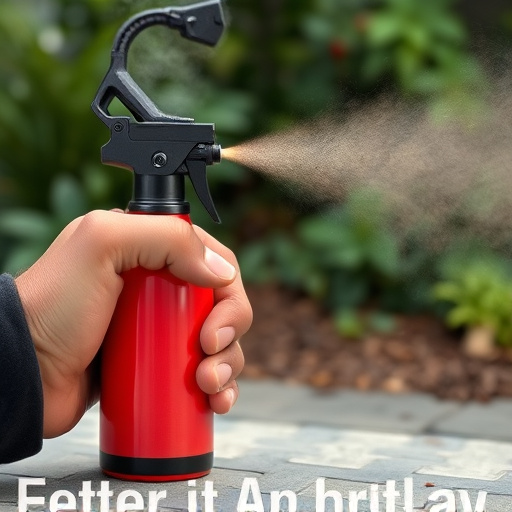Citizens considering concealed pepper spray for self-defense must understand local regulations, including age limits, training requirements, and spray specifications. Choosing the right spray involves evaluating intended use, range, and carrying method—discreet or specialized. Effective carrying techniques require compact holsters, easy access, and regular training to ensure swift deployment during emergencies. Responsible handling, storage, and safety protocols are vital for legal compliance and personal protection.
In today’s diverse world, considering personal protection is a responsible step. One effective tool gaining popularity among civilians is concealed pepper spray. This guide explores the essentials of defensive spray for civilian use, focusing on legal considerations, product selection, and crucial carrying techniques. Learn how to choose the right pepper spray, master discreet and accessible carrying methods, and gain valuable training tips for safe and responsible usage.
- Understanding Pepper Spray Legalities for Civilians
- Choosing the Right Pepper Spray for Your Needs
- Effective Carrying Techniques: Discreet and Accessible
- Training and Safety Tips for Responsible Use
Understanding Pepper Spray Legalities for Civilians
In many jurisdictions, civilians are allowed to carry pepper spray for self-defense purposes, provided they comply with specific regulations. Understanding these legalities is crucial when considering defensive spray as a civilian protection tool. The laws regarding concealed pepper spray carrying techniques vary widely from one region to another. It’s essential to research and adhere to local guidelines, which often include age restrictions, training requirements, and limits on the amount and type of spray permitted.
Knowing your rights and responsibilities is key when purchasing and carrying pepper spray. Different states have different rules about where you can conceal and carry your defensive spray—whether it’s in your vehicle, on your person, or both. Some areas allow open carry, while others mandate concealed carry with a permit. Familiarize yourself with the permitted types of spray, including OC (oleoresin capsicum) concentrations, to ensure you’re using an effective yet legal self-defense tool.
Choosing the Right Pepper Spray for Your Needs
When selecting a defensive spray for civilian protection, understanding your specific needs and preferences is crucial. Consider factors such as intended use, range, and carrying method. For instance, if you prioritize ease of carry, opt for concealed pepper spray designed to fit discreetly in pockets or purses, allowing quick access during unexpected encounters. These compact options often come with advanced features like adjustable nozzles for precise spraying.
On the other hand, if you need a longer range and more power, specialized defensive sprays with extended reach and stronger formulations might be the way to go. Different carrying techniques, such as clip-on belts or keychains, offer convenience and ensure the spray is readily available when needed. Always choose a reputable brand that provides clear instructions on usage and safety measures for effective self-defense.
Effective Carrying Techniques: Discreet and Accessible
Carrying a concealed pepper spray is a smart move for personal safety, but it’s crucial to learn effective techniques to ensure its accessibility when needed. One of the primary considerations is choosing the right holster or carrier that allows easy access while keeping the spray discreet. Opt for slim and compact designs that can be attached to your person or stored in pockets without drawing unnecessary attention.
Practice regular training sessions to master the art of retrieving your pepper spray quickly. This includes learning how to draw and deploy it smoothly, even under stress. Keep it within easy reach, such as close to your dominant hand or in a readily accessible pocket, so that you can react promptly in potentially dangerous situations.
Training and Safety Tips for Responsible Use
When it comes to carrying concealed pepper spray for civilian protection, proper training and safety are paramount. It’s crucial to learn the correct carrying techniques, understanding how and when to deploy the spray, and being aware of local laws regarding its possession and use. Training sessions should cover the hidden carry methods, ensuring the spray is readily accessible but not visible, often involving discreet holsters or pocket holders.
Safety tips include practicing responsible handling to avoid accidental discharge, keeping the spray away from heat sources or direct sunlight that could cause damage or reduce effectiveness, and regularly checking the expiration date of the contents. Additionally, users should familiarize themselves with safe storage options in their homes or vehicles, ensuring children and pets cannot gain access. Regularly reviewing safety protocols will help ensure a calm response during potentially dangerous situations.
Civilian defensive spray, also known as pepper spray, can be a powerful tool for personal safety when used responsibly. By understanding local legalities, selecting the right product for your needs, learning proper carrying techniques like concealed pepper spray methods, and following safety guidelines, individuals can gain confidence in their ability to protect themselves effectively. Remember, awareness, preparation, and responsible use are key to ensuring pepper spray remains a valuable asset in personal safety strategies.
